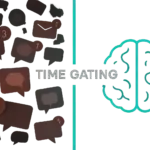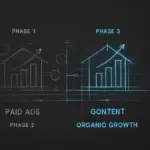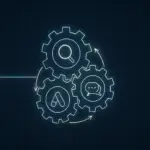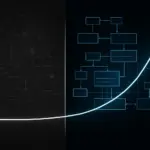Last Tuesday was a write-off. I started the day with one clear, high-priority task: finalize the system architecture for a new JvG Labs automation project. I ended it at 7 PM with the task untouched, having spent the day swept up in a reactive tide of emails, minor operational fires, and unplanned calls.
My initial reaction was frustration, a feeling of personal failure—a lack of discipline or focus. But I’ve learned over the years that such feelings, while normal, are often a symptom of a different problem. It’s rarely about a lack of willpower. It’s almost always about a breakdown in a system.
As author James Clear notes in Atomic Habits, „You do not rise to the level of your goals. You fall to the level of your systems.“ When a day like Tuesday happens, my goal to complete a task didn’t fail; the system designed to protect my time and focus did. This shift in perspective is crucial. It moves the problem from an unchangeable personal trait („I’m not disciplined enough“) to a fixable, external mechanism („My notification management system is flawed“).
To diagnose and fix these breakdowns, I don’t rely on motivation; I rely on a process. Specifically, a modified version of the After-Action Review (AAR).
From Personal Failure to System Diagnosis
Most of us default to willpower as the solution for productivity. We try to force ourselves to focus, to push through distractions, to simply be better. But willpower is a finite resource, like a battery that drains throughout the day. A system, on the other hand, is a set of rules and processes that works on your behalf, preserving your energy for the most important decisions.
When a system fails, relying on willpower is like trying to patch a leaky dam with your bare hands. A system-based approach is about analyzing the dam itself to find the structural weakness.
This principle is the foundation for designing robust operational frameworks. It’s about creating structures that reduce our reliance on moment-to-moment discipline, making your desired outcomes the default path of least resistance.
The After-Action Review (AAR): A Tool for Objective Analysis
The After-Action Review was originally developed by the U.S. Army as a method for dissecting missions to extract every possible lesson. As the Harvard Business Review notes, its power lies in its simplicity and its „what, not who“ philosophy. The goal is never to assign blame but to understand the gap between intent and reality.
A structured process like this is a powerful antidote to the cognitive biases that cloud our judgment. As Daniel Kahneman outlines in Thinking, Fast and Slow, we’re all susceptible to hindsight bias (the „I-knew-it-all-along“ feeling) and outcome bias (judging a decision solely by its result). These biases prevent learning. If we think an outcome was obvious all along, we don’t investigate the flawed assumptions that led us astray.
An AAR forces you to step outside these biases and look at the event with the dispassionate eye of an engineer. You’re not judging yourself; you’re debugging a machine.
My 5-Step Framework for a Personal AAR
I’ve adapted the classic AAR into a five-step process that I can run in about 15 minutes whenever a personal or project system goes off the rails.
- Objective & Intent: What was the plan? What was supposed to happen? (Be specific. „Work on the project“ isn’t enough. „Write 1,000 words for the Q3 marketing report between 9 AM and 11 AM“ is.)
- Actual Outcome: What really happened? (This is a factual debrief. List the events as they occurred, without emotion or judgment. „Answered emails from 9:15 to 10:30. Took a call at 10:45.“)
- Root Cause Analysis: Why was there a gap between #1 and #2? (Go at least one level deeper than the surface answer. The cause wasn’t „I got distracted.“ It was „An email notification appeared, and my system lacks a rule for handling non-urgent inbound requests during focus blocks.“)
- System Adjustment: What one change to the system would prevent this from reoccurring? (Focus on process, environment, or rules, not willpower. The adjustment isn’t „try harder to focus.“ It’s „enable ‚Do Not Disturb‘ mode automatically when a ‚Deep Work‘ event starts on my calendar.“)
- Next Action: What is the immediate, concrete task to implement the adjustment? (This must be small and actionable. „Spend 5 minutes creating the automation now“ or „Add a checklist item to my morning routine.“)
A Practical Example: The Case of the Lost Tuesday
Let’s apply this framework to my failed Tuesday.
- 1. Objective & Intent: To complete the system architecture draft for the new JvG Labs project during my 9 AM – 12 PM deep work block.
- 2. Actual Outcome: The block was consumed by responding to emails about a production line update for JvG Technology and handling an unexpected server issue for our Mehrklicks marketing funnels. The draft remained untouched.
- 3. Root Cause Analysis: My calendar was blocked, but my communication channels were not. My system for deep work was incomplete—it defined the time but didn’t include rules for defending that time. The underlying assumption was that I would simply ignore incoming notifications, which relied entirely on willpower.
- 4. System Adjustment: The system needs an automated „lockdown“ component. I will create a „Focus Mode“ on my devices that is automatically triggered by any calendar event titled „Deep Work.“ This mode will close my email client, mute all Slack notifications, and block distracting websites.
- 5. Next Action: Open my automation software (e.g., Zapier or macOS Shortcuts) and build this workflow. Time-box it to 20 minutes.
By running this process, I converted a frustrating day into a permanent system upgrade. The result: a problem solved not just for tomorrow, but for every future deep work session.
Frequently Asked Questions about Personal AARs
How often should I do an AAR?
Not for every minor deviation. I reserve it for when there’s a significant gap between my plan and the result, or when a particular failure pattern keeps repeating. If you end a day feeling frustrated or surprised by your lack of progress, that’s a perfect trigger for an AAR.
Isn’t this just overthinking a bad day?
It’s the opposite. Dwelling on a bad day without a framework is unproductive overthinking—it’s an emotional loop. An AAR is a structured, logical process that produces a concrete improvement. It’s the difference between worrying about a problem and solving it.
What if the root cause is just that I was tired or unmotivated?
That’s still a system problem. „Tired“ is an outcome. The root cause might be a breakdown in your sleep system (inconsistent bedtime, caffeine too late) or your energy management system (no breaks scheduled, poor nutrition). „Unmotivated“ can be a symptom of a clarity system failure (the project’s ‚why‘ is unclear) or a task management system failure (the next step is too big or ambiguous). The system always extends beyond the immediate task.
Can this be used for team projects too?
Absolutely. The AAR was born as a team tool. The principles are identical: establish what was planned, what happened, why there was a difference, and what will be done differently next time. The only addition for a team setting is a non-negotiable rule of psychological safety: it must be a blame-free process focused entirely on improving the collective system.
Moving from Reaction to Reflection
The most valuable shift I’ve made in my entrepreneurial journey is moving from blaming myself to analyzing my systems. Failures, distractions, and missed deadlines are not moral failings; they are data points highlighting a weakness in the machine.
Treating them as such allows you to move from a state of constant reaction to one of continuous, intentional improvement. The next time a day goes completely off the rails, don’t just write it off. Take 15 minutes. Run an After-Action Review. You’re not just saving your next day; you’re upgrading the entire operating system of your productivity.




